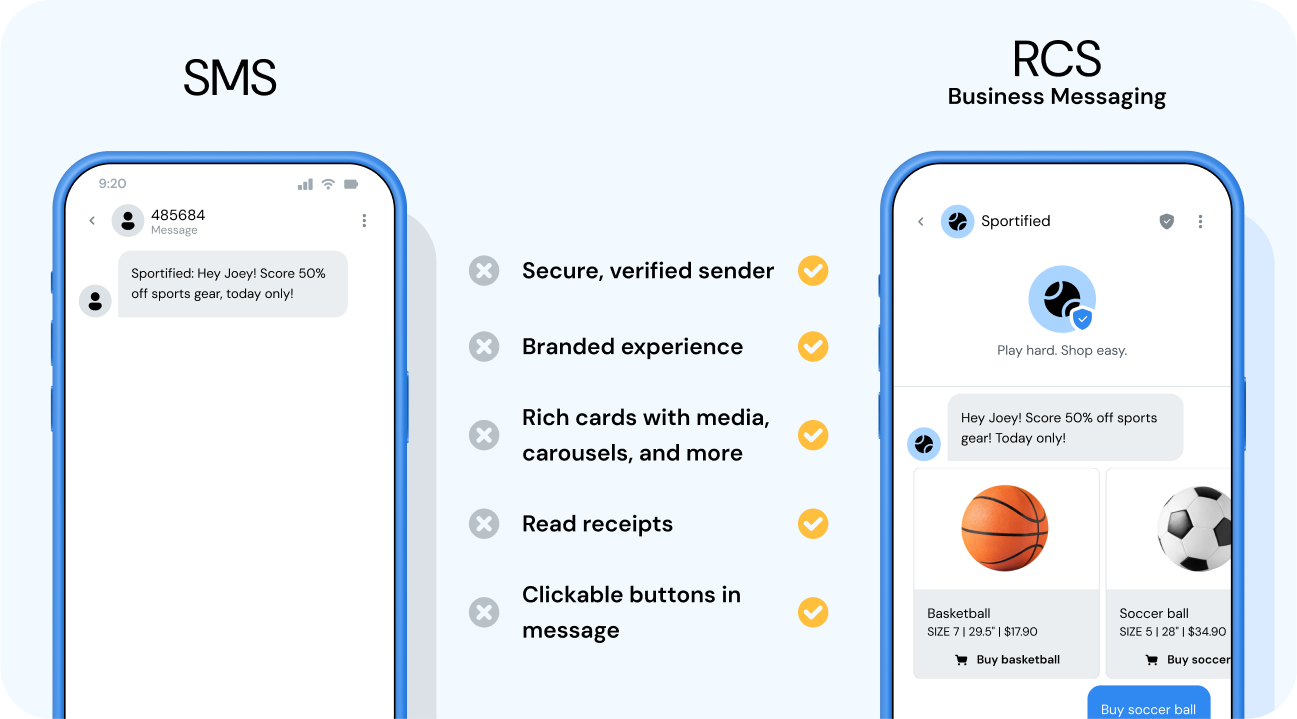Chapter 1
RCS explained: The modern messaging standard

Chapter 1

RCS (Rich Communication Services) is a person-to-person messaging protocol designed to deliver better experiences across Apple and Android devices. Think of it as a richer, more engaging alternative to regular texting, with high-resolution images, videos, reactions, and typing indicators.
RCS for Business puts this technology to work for business-consumer communications and takes it even further.

RCS for Business takes messaging to the next level, offering powerful ways to engage with customers and drive results:
Put simply, RCS upgrades personal texting, while the business solution redefines what’s possible in business messaging. Discover more in our post, “What is RCS messaging? Google’s communication chat protocol explained.”
To keep things clearer, when we talk about RCS in the following chapters, we’re referring to RCS for Business.
Monthly active users in 2023
New RCS users expected by mid-2025
RCS market value in 2023
Projected value in 2028
Projected RCS business messaging traffic for 2025*
RCS started out as Android-only and has really taken off recently with Apple starting to roll it out for both personal and business messaging for select markets and carriers in 2024. This is a big step toward making RCS available everywhere.
Now, with support from both major operating systems and more users and businesses jumping on board, RCS is only going to keep growing.
Source: Sinch, 2024
*Source: Juniper Research, 2024
SMS has been the go-to for mobile messaging for decades, offering simplicity and universal reach, but how does it compare to RCS? Let’s break down the key differences between SMS and RCS to help you understand where each fits into your communication strategy.


RCS and WhatsApp have a lot in common, and with Apple now supporting RCS, it’s easy to wonder if RCS might someday replace WhatsApp. But it’s not about replacing – these channels excel in different ways, making them complementary rather than interchangeable. That’s why it’s important to tailor your communication strategy to your customers to meet them where they are and better reach your goals.
Wondering where iMessage stands in all this (or rather, its business version, Apple Messages for Business)? Again, it all comes down to your goals and audience. Check out our dedicated blog, “RCS vs iMessage: What’s the difference?”, to understand each channel’s unique benefits.
Upgrade your business messaging – get started with RCS for Business!